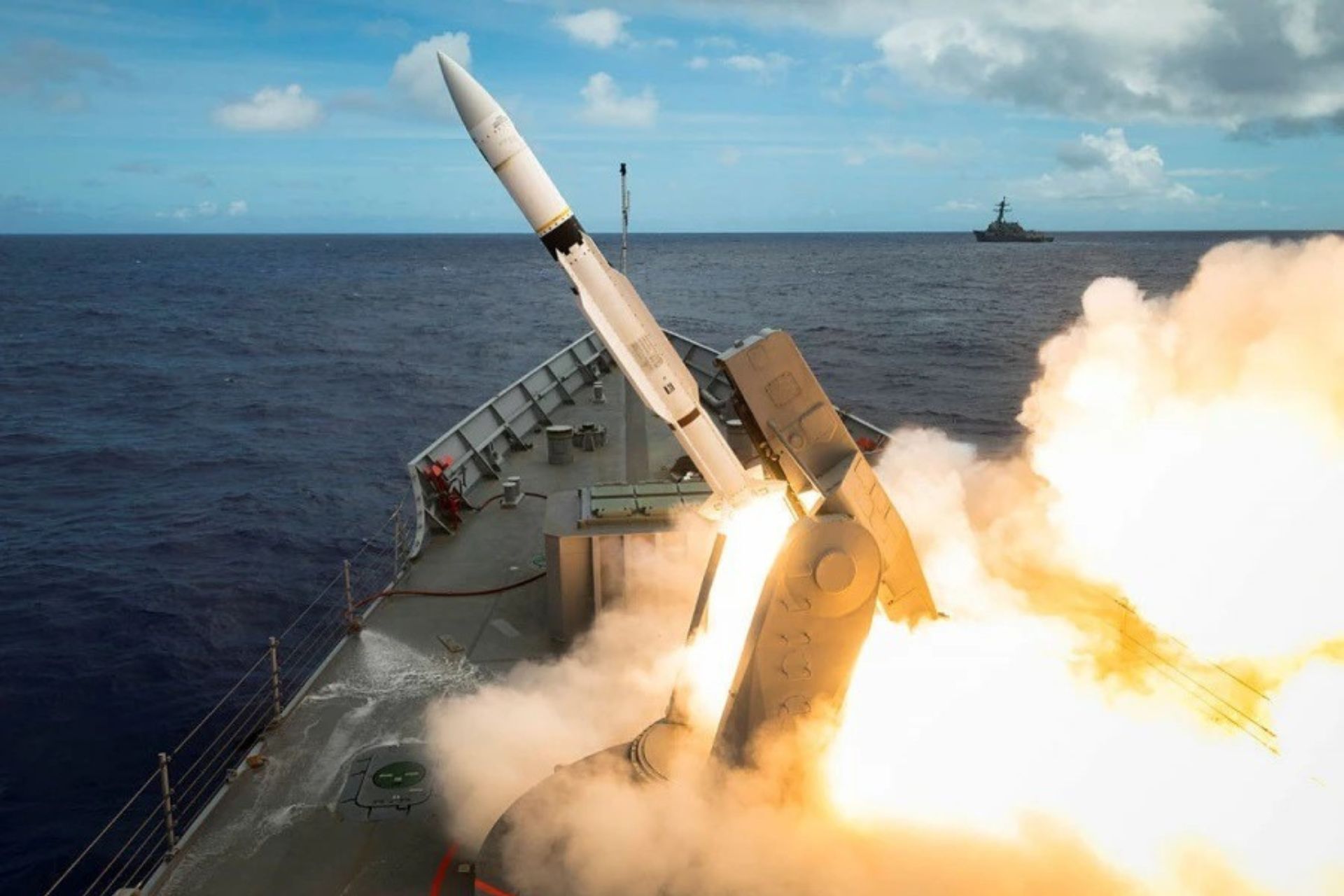Breaking News
Chilean Navy Strengthens Naval Capabilities with Missile Launcher Maintenance.
The Chilean Navy has partnered with BAE Systems to enhance the maintenance of the MK-13 Mod 4 missile launch system on its Adelaide-class frigates. This collaboration is part of a broader initiative aimed at ensuring the operability and effectiveness of crucial defense systems. The MK-13 launcher is an essential component of the frigates' armament, enabling the deployment of Raytheon's Standard SM-2 Block IIIA missiles, which have a range exceeding 166 kilometers.
Follow Army Recognition on Google News at this link

A Standard SM-2 missile was launched from one of the Adelaide-class frigates, which the Chilean government purchased from Australia in 2019 (Picture source: Royal Australian Navy)
Acquired from the Royal Australian Navy in 2019, the Adelaide-class frigates, named FFG-11 Capitán Prat and FFG-14 Almirante Latorre, have been critical additions to Chile's naval fleet. Originally equipped to carry Standard SM-1 missiles or a combination of SM-1 and Boeing RGM-84 Harpoon anti-ship missiles, these frigates have undergone significant upgrades. As part of the SEA 1390 program, also known as the FFG Upgrade Project, the frigates were enhanced to include the more advanced Standard SM-2 missiles, improving both zone defense and self-defense capabilities.
The Standard Missile-2 (SM-2) Block IIIA is a crucial component of the U.S. Navy's air defense arsenal, primarily used for fleet area air defense and ship self-defense. The SM-2 family, including Block IIIA, has been in service since the 1980s, with the Block IIIA variant specifically entering service in 1991. It was designed to enhance low-altitude target engagement capabilities.
The SM-2 Block IIIA is known for its versatility and reliability in intercepting high-speed, high-altitude anti-ship cruise missiles and aircraft, thanks to its semi-active radar homing guidance system. It's a medium-to-long-range missile that can be launched from Mk 41 Vertical Launching Systems (VLS) aboard various naval ships like the Ticonderoga-class cruisers and Arleigh Burke-class destroyers.
Significantly, the SM-2 Block IIIA features a blast-fragmentation warhead and is capable of engaging threats at ranges up to 90 nautical miles and altitudes of up to 65,000 feet. The missile employs tail controls and a solid-fuel rocket motor for propulsion, enhancing its maneuverability and speed to more than Mach 3, making it effective against a variety of aerial threats.
The U.S. Department of Defense (DoD) facilitated this upgrade by amending a previously awarded contract to BAE Systems. Valued at $9 million, this modification covers not only the Chilean frigates but also extends to similar systems used by the Taiwanese Navy. The contract highlights the international cooperation involved in these military enhancements and includes specialized engineering and technical support services, such as repairs and overhauls.
Scheduled for completion by July 2025, the work will be carried out in Taiwan, Minneapolis, Minnesota, and Chile. This illustrates the collaborative efforts within the Foreign Military Sales (FMS) program, reflecting the shared defense priorities of the United States, Taiwan, and Chile. The upgrade of the MK-13 system is expected to significantly enhance the operational readiness of the Chilean Navy, equipping it to handle various aerial threats, from unmanned drones to high-altitude missiles, in all weather conditions and electronic warfare environments.


























